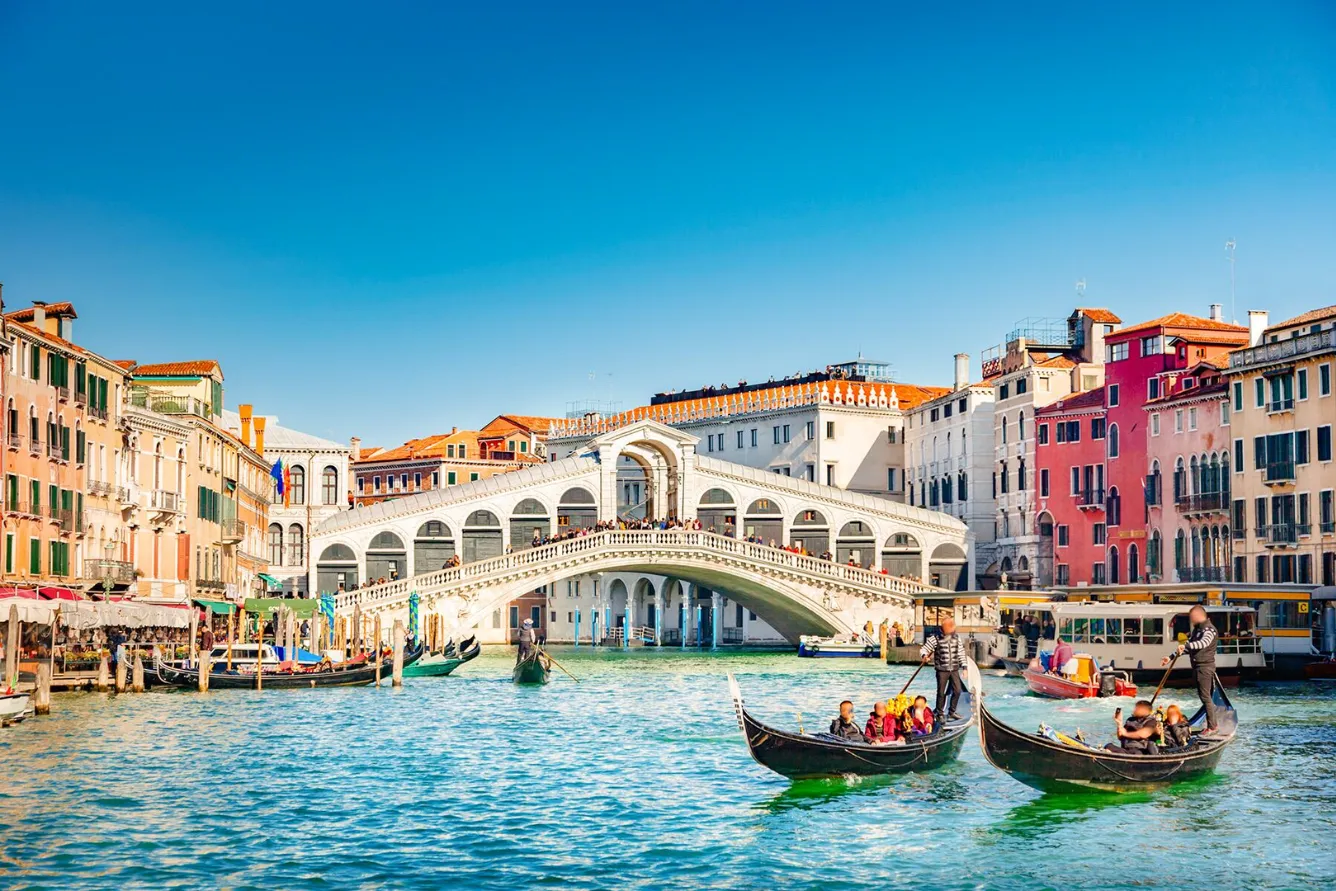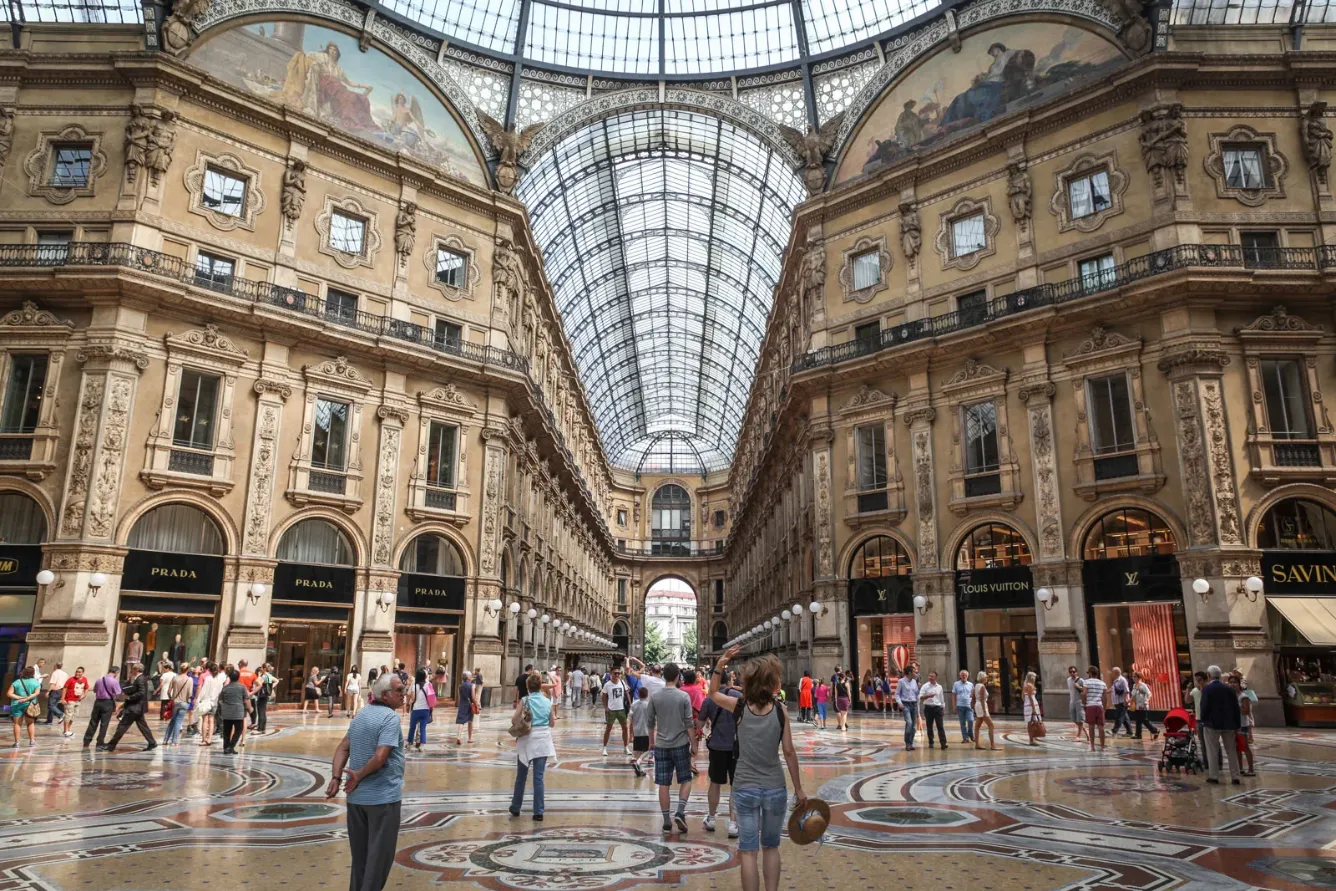Italy, the boot-shaped country, has long been renowned as a living museum, boasting countless unique architectural marvels steeped in history and culture. From ancient Roman Colosseums to magnificent Gothic cathedrals, each structure tells its own story, contributing to Italy’s irresistible allure. Exploring these landmarks is not just a trip, but a journey back in time, immersing oneself in unparalleled architectural beauty.
Rome – The Eternal City with Timeless Architecture
Rome, the capital of Italy, rightfully earns its title as one of the world’s leading art cities. It was not only the center of power for the mighty Roman Empire in the past but also a place that preserves countless ancient, medieval, and Renaissance architectural works.
One of the most famous architectural symbols of Rome is the Colosseum. Built in the first century AD, this amphitheater was once the site of bloody gladiatorial contests and grand public spectacles. With its unique elliptical architecture and capacity to hold tens of thousands of people, the Colosseum is a testament to the talent of ancient Roman engineers and architects. Today, even in ruins, the Colosseum remains an unmissable destination when visiting Rome, attracting millions of tourists each year.

Another equally impressive architectural work in Rome is the Pantheon. Built in the second century AD, the Pantheon was originally a temple dedicated to Roman gods. Later, it was converted into a Catholic church. The Pantheon’s highlight is its massive dome with an oculus at the top, allowing natural light to flood the interior. With its unique architecture and long history, the Pantheon is one of the best-preserved ancient Roman buildings.
Furthermore, the Roman Forum is also a captivating destination in Rome. Once the political, religious, and commercial center of ancient Rome, this forum is now a vast archaeological site with many ruins of temples, government buildings, and other public structures. Walking through the Roman Forum, visitors can visualize the vibrant life of ancient Romans and uncover the secrets of one of history’s greatest civilizations.
Venice – The Floating City with Romantic Architecture
Venice, a city famous for its canals and gondolas, is one of the most romantic tourist destinations in the world. Venice’s architecture is equally unique, with a harmonious blend of Gothic, Byzantine, and Renaissance styles.
St. Mark’s Square (Piazza San Marco) is the heart of Venice and one of the most beautiful squares in the world. It is home to many important architectural landmarks such as St. Mark’s Basilica with its magnificent Byzantine architecture and the towering Campanile, offering stunning panoramic views of the entire city. St. Mark’s Square is a must-visit when in Venice, especially during Carnival, when the square becomes vibrant with artistic performances and colorful costumes.

The Rialto Bridge is one of the most famous bridges in Venice and a symbol of the city. Built in the 16th century, it is one of the oldest bridges spanning the Grand Canal. With its unique architecture and prime location, the Rialto Bridge is a favorite spot for tourists, where they can admire the beauty of Venice and shop for unique souvenirs.
An unmissable experience when visiting Venice is taking a gondola ride around the canals. Sitting in a gondola, visitors can admire the ancient buildings, charming bridges, and feel the romantic atmosphere of the floating city.
Florence – The Cradle of the Renaissance with Exquisite Architecture
Florence, the capital of Tuscany, is known as the cradle of the Renaissance. This city is famous for its exquisite architecture, world-class art museums, and unique sculptures.
Santa Maria del Fiore Cathedral (Duomo) is one of the architectural symbols of Florence. The cathedral is highlighted by its massive dome designed by Brunelleschi, a masterpiece of engineering and art. Visitors can climb to the top of the dome to admire the panoramic view of Florence with its characteristic red rooftops.

The Ponte Vecchio is one of the oldest bridges in Florence and one of the city’s most famous attractions. The bridge was built in the Middle Ages and is home to many jewelry and handicraft shops. A special feature of the Ponte Vecchio is the houses and shops built along both sides of the bridge, creating a unique and attractive architecture.
The Uffizi Gallery is one of the world’s leading art museums, displaying famous artworks by masters such as Leonardo da Vinci, Michelangelo, and Botticelli. Here, visitors can admire masterpieces of painting and sculpture from the Renaissance period and discover the stories behind each work.
Milan – Fashion Capital with Modern and Classical Architecture
Milan, the fashion capital of Italy, is not only famous for its luxury boutiques and high-end shopping centers but also a city with diverse architecture, combining modern and classical styles.
Milan Cathedral (Duomo di Milano) is one of the largest Gothic cathedrals in the world and a symbol of Milan. The cathedral was built over 600 years and is distinguished by its magnificent Gothic architecture, pointed spires, and thousands of decorative statues. Visitors can climb to the rooftop of the cathedral to admire the panoramic view of Milan.

Galleria Vittorio Emanuele II is a historic shopping arcade located next to the Duomo. This shopping center is famous for its beautiful glass-domed architecture and stores of world-renowned brands. Galleria Vittorio Emanuele II is an ideal destination for those who love shopping and want to admire Milan’s architectural beauty.
Naples – City with Unique Architecture and Natural Beauty
Naples, a large city located on the southern coast of Italy, is famous for its majestic natural beauty and rich cuisine. Naples’ architecture is equally unique, with a combination of Baroque, Gothic, and Renaissance styles.
The Historic Centre of Naples is recognized by UNESCO as a World Heritage Site and is one of the largest and most important historic centers in Europe. It is home to many historical buildings, narrow streets, and bustling squares. Walking through the historic center of Naples, visitors can discover the secrets of this city and feel the vibrant atmosphere of local life.

Pompeii and Herculaneum are two ancient Roman cities buried by the volcanic ash of Mount Vesuvius in 79 AD. Today, both cities are important archaeological sites, allowing visitors to explore the life of ancient Romans and admire the nearly perfectly preserved architectural structures.
Italy is a treasure trove of invaluable architecture, with unique and diverse structures, from ancient ruins to modern buildings. Exploring these architectural landmarks is a fascinating journey, helping visitors better understand Italy’s history, culture, and art. Plan your trip and discover the wonders that Italy offers!